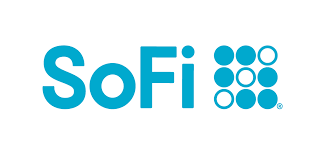Here's What the SVB Bank Closure Means for Real People, According to Tori Dunlap
KEY POINTS
- FDIC insurance covers up to $250,000 per depositor, per ownership category, in the event of a bank failure.
- Nearly all U.S. banks have FDIC insurance, but you can confirm this by contacting the bank or visiting its website.
- If you have more than $250,000, split it among multiple FDIC-insured banks so all your money is covered.
Everyone's money is safe, but take this time to review where you're keeping your money.
Earlier this month, Silicon Valley Bank's collapse became the second-largest bank failure in U.S. history. It's also the largest bank failure since 2008. For many, it has brought back the fear and uncertainty they felt during the financial crisis.
Are banks a safe place to put your money? And what about the investments in your retirement account? Money expert Tori Dunlap, founder of Her First $100K, covered this in an episode of her podcast. She gave listeners a great explanation of why you shouldn't panic.
Is your money safe in the bank?
With any bank worth using, the money in your account is insured for up to $250,000. Almost all banks are members of the Federal Deposit Insurance Corporation (FDIC), which means they have FDIC insurance. This insurance covers up to $250,000 per depositor, per ownership category, in the event of a bank failure.
That means if your bank fails, the FDIC will take over and cover the losses. As Dunlap explained, if the bank is FDIC-insured, "it is 100% guaranteed" up to the $250,000 coverage limit. It isn't a long, drawn-out process, either. The FDIC's goal is to make funds available within two business days of the bank failure.
If you want to check that your bank is FDIC-insured, contact the bank and ask. Or, visit the bank's website, as this information will be readily available there. Note that if you have your money in a credit union, it will be a member of the National Credit Union Administration (NCUA), not the FDIC. The NCUA provides the same insurance coverage of up to $250,000.
But what if you have more than $250,000 in your bank account? That was the problem for clients of Silicon Valley Bank. Many of its clients were businesses that kept far more than $250,000 in their accounts.
In the case of Silicon Valley Bank, the FDIC is protecting depositors in full. It has already given depositors access to all their money. While this is good news for clients of Silicon Valley Bank, and the people working for companies that banked there, it doesn't mean the FDIC will always do this. That's why if you have more than $250,000 in your bank account, you should make some changes.
How to protect your money
To make sure all your money is covered by the FDIC, don't keep more than $250,000 at a single bank. Open accounts at multiple banks and split your money between them.
This isn't hard and doesn't need to cost you any money, because there are plenty of bank accounts with no fees available. To get the best return on your money, look for accounts with high APYs. Here are a few options to consider:
What about investments?
One more thing you may be worried about is your retirement. During the 2008 financial crisis, most people's investments took a huge hit. With the turmoil in the banking industry, and the possibility of a recession, it's natural to wonder if the same thing will happen this year.
Although Dunlap believes a recession is coming, she says that shouldn't change your investing strategy, and she's right. Continue to invest, and make sure you're investing for the long term. There's always the possibility of market volatility that affects your portfolio. If you ride this out and don't panic, the stock market will bounce back, just like it did after the financial crisis.
If you're within about five to 10 years of retirement, this is a good time to review your asset allocation. Consider putting more of your money in fixed-income investments, such as bonds. Since these are a low-risk investment, they help balance out stocks, which are more volatile.
The Silicon Valley Bank closure was worrisome news, but bank failures are something you can prepare for. Make sure your account has FDIC (or NCUA) insurance, and if you have more than $250,000, split it among multiple insured accounts.
Our Research Expert
We're firm believers in the Golden Rule, which is why editorial opinions are ours alone and have not been previously reviewed, approved, or endorsed by included advertisers. Motley Fool Money does not cover all offers on the market. Motley Fool Money is 100% owned and operated by The Motley Fool. Our knowledgeable team of personal finance editors and analysts are employed by The Motley Fool and held to the same set of publishing standards and editorial integrity while maintaining professional separation from the analysts and editors on other Motley Fool brands. Terms may apply to offers listed on this page. APYs are subject to change at any time without notice.



